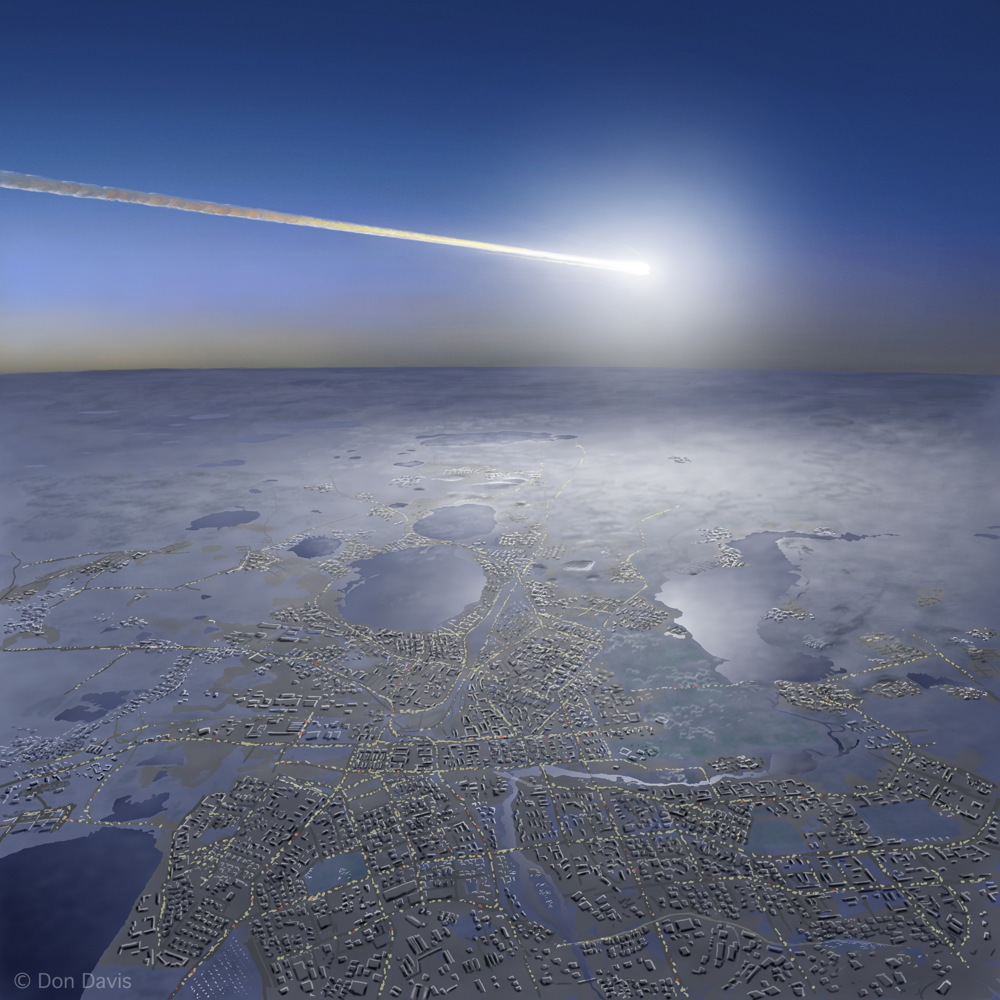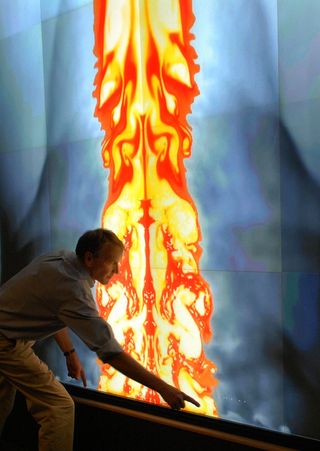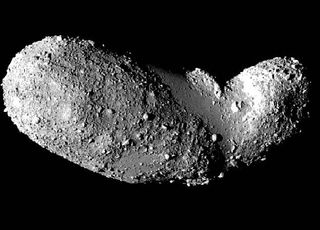
US Military's Meteor Explosion Data Can Help Scientists Protect Earth

The U.S. Air Force and NASA have ironed out problems that prevented scientists from obtaining a steady stream of military tracking data on meteor explosions within Earth's atmosphere.
Ever since the meteor explosion over Chelyabinsk, Russia, in February 2013, scientists have been hungry for data that can help them assess the threat of fireballs, meteors and near-Earth objects (NEOs).
Meteor detonations within Earth's atmosphere can be seen by U.S. military sensors on secretive spacecraft. Using this government data, in early 2013, NASA's Jet Propulsion Laboratory (JPL) launched a new website to share the details of meteor explosion events. [Photos: Potentially Dangerous Asteroids]
But earlier this year, the site became stagnant, with no new updates. Due to budget cuts and personnel reductions, NASA's military partner was no longer able to carry out the work.
Repairing the meteor explosions pipeline
However, documents are now in place to ensure that the site is updated with a constant stream of data on meteor explosions, which are also known as bolides. In January 2013, the Air Force Space Command's Air, Space and Cyberspace Operations directorate formalized its work with NASA's Science Mission directorate with a memorandum of agreement (MOA).
"The MOA was amended effective June 24, 2014, in order to ensure that the flow of bolide data to the scientific community is uninterrupted," a representative for the U.S. Air Force Space Command's Space and Missile Systems Center (SMC), which oversees military space systems, told Space.com. "With added language to the formal MOA, SMC will provide bolide data on a consistent basis and alleviate any concerns of data flow getting cut off."
Furthermore, there is a separate SMC team at Schriever Air Force Base in Colorado that's responsible for the processing and dissemination of the data, the SMC representative said.
Get the Space.com Newsletter
Breaking space news, the latest updates on rocket launches, skywatching events and more!
Trove of data

One big reason why the military data on bolides is so important is that there is increasing evidence that Earth is on the receiving end of a sizable amount of natural asteroid/comet material, otherwise known as "spacefall."
By reviewing military-sensor data collected over the years, scientists hope to better understand spacefall rates. However, all of the data isn't available just yet.
"The plan is to release all appropriate data, although it will take some time for processing to occur," the SMC representative told Space.com. "The Air Force has maintained a database of all detected events. The archived raw data requires very intricate and specific processing through a software program so that it can be useful to an external organization."
The data will give scientists a better idea of the population of very small asteroids that regularly encounter the Earth, and help researchers estimate how many larger objects may exist, said Lindley Johnson, NEO program executive within the Planetary Science Division of NASA's Science Mission Directorate in Washington, D.C.
Peter Brown, director of the Center for Planetary Science and Exploration at the University of Western Ontario in Canada, called the partnership a "major step forward."
"Speaking from the science community perspective, I would say this partnership and agreement between Air Force Space Command and NASA is a major step forward in terms of being able to study and analyze small impactors," Brown told Space.com.
For example, the data from the JPL fireball website helps correlate U.S. government sensor observations of fireballs with infrasound detections by the International Monitoring System (IMS), a network overseen by the Comprehensive Nuclear-Test-Ban Treaty Organization.
Independent check
Researchers can calibrate the current global detection efficiency of the IMS, Brown said. This U.S. government sensor-infrasound comparison also provides an independent check on the fireball energies and flags unusual events, he said.
"The timely release of this information on the JPL website now also permits rapid follow-up of interesting bolides to facilitate time-sensitive studies, such as meteorite or airborne dust recovery, for the first time,” Brown said.
In addition, the data contain a "potential goldmine of information," particularly regarding meteorite-producing fireballs and their pre-atmospheric orbits, as well as information that helps address the general question of meteorite-asteroid linkages, he said.

Regular space rock reports
But in order for the data to be useful, it must be distributed regularly, scientists say.
"The [Air Force] responses sound positive," said Clark Chapman, asteroid expert with the Southwest Research Institute in Boulder, Colorado."But the proof of any change in practices will come with actual, regular distribution of such information to interested scientists, hopefully very shortly after a detected event," he told Space.com.
Chapman said he and other specialists look forward to receiving timely and regular reports of bolide events via the Air Force/NASA relationship.
To view the "Fireball and Bolide Reports" website, overseen by NASA's Near-Earth Object Program, visit http://neo.jpl.nasa.gov/fireballs/.
Leonard David has been reporting on the space industry for more than five decades. He is former director of research for the National Commission on Space and is co-author of Buzz Aldrin's 2013 book "Mission to Mars – My Vision for Space Exploration," published by National Geographic. Follow us @Spacedotcom, Facebook and Google+. Original article on Space.com.
Join our Space Forums to keep talking space on the latest missions, night sky and more! And if you have a news tip, correction or comment, let us know at: community@space.com.

Leonard David is an award-winning space journalist who has been reporting on space activities for more than 50 years. Currently writing as Space.com's Space Insider Columnist among his other projects, Leonard has authored numerous books on space exploration, Mars missions and more, with his latest being "Moon Rush: The New Space Race" published in 2019 by National Geographic. He also wrote "Mars: Our Future on the Red Planet" released in 2016 by National Geographic. Leonard has served as a correspondent for SpaceNews, Scientific American and Aerospace America for the AIAA. He has received many awards, including the first Ordway Award for Sustained Excellence in Spaceflight History in 2015 at the AAS Wernher von Braun Memorial Symposium. You can find out Leonard's latest project at his website and on Twitter.